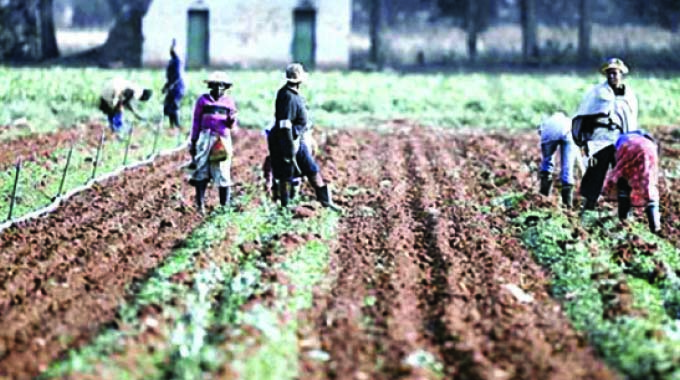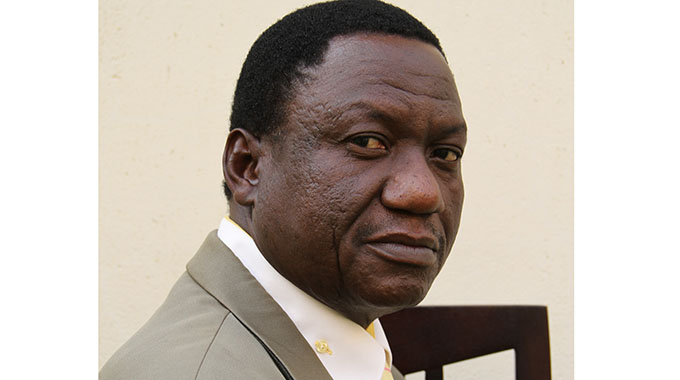Sanctions affect Zim’s fight against Covid-19

Julius Chadeba Correspondent
In the early 2000s, Zimbabwe embarked on the fast-track Land Reform Programme.
This move was aimed at correcting imbalances created during the colonial era in which locals, who were in the majority, lost their land to the white minority settlers.
Thus, through the land reform programme, the Government sought to correct those historical injustices.
In response to this, the West wanted to force Zimbabwe to reverse the land reform programme by imposing illegal sanctions on the country in the name of purported democracy.
In 2001, the United States Congress passed the Zimbabwe Democracy and Economic Recovery Act (ZIDERA), which imposed economic sanctions on Zimbabwe.
The Act was amended in 2018.
These sanctions were said to be targeted at Government officials, but they ended up affecting ordinary Zimbabweans, and crippling many sectors of the economy in Zimbabwe, including the health subsector (Chidiebere: 2017).
The sanctions denied the people of Zimbabwe the right to proper healthcare and life, thus going against the gospel the West preached.
Due to the illegal embargoes, the country’s economy suffered, with the meltdown being more pronounced around 2008.
This recession hit the health sector badly. Medical supplies and infrastructure requirements could no longer be met, and Government spending on health dropped.
As a result of the challenges faced in the sector, professionals left the country in droves, looking for greener pastures.
The Government came up with many initiatives in a bid to bust the sanctions and revamp the health sector, among other areas.
With the public health system becoming politicised, a health plan had to be instigated to improve on efficiency and effectiveness in the sector.
However, with the illegal sanctions in place, the Government’s efforts were hindered. National policy frameworks faced severe hindrances, particularly in the health sector.
Due to ideological differences, politics took a huge toll on the country.
Some in the opposition saw everything through political lenses, particularly hued in alien colours, which aggravated the situation.
It was not surprising, therefore, that when the Covid-19 pandemic hit the world in December 2019, bringing the global economy to its knees, Zimbabwe was taken unprepared.
All eyes were on the Southern African country whose health sector was at its weakest because of sanctions.
Although the Government of Zimbabwe responded swiftly to mitigate the impact of the new coronavirus, which saw relatively lower deaths being recorded as compared to other countries, the country’s health system was put to test.
Hospitals were not adequately equipped to deal with the surging positive cases.
The Second Republic has made efforts to curb the spread of Covid-19 by implementing lockdown measures in line with the World Health Organisation’s guidelines, while making efforts to acquire personal protective equipment and vaccines.
Though China and the United Arab Emirates helped with donations, the country’s stocks of medical equipment required in fighting Covid-19, remained low.
Health workers did not have adequate protective clothing to attend to Covid-19 positive patients.
This resulted in health professionals embarking on an industrial action to express their fears for their own health and lives.
As Cassim (2020) argues, in this regard, sanctions impacted negatively on Zimbabwe’s response to the pandemic, hence endangering the country.
However, with solidarity from SADC and other African countries at large, Zimbabwe is lobbying for the removal of the sanctions that have been imposed on the country for two decades now.
October 25 has been set aside as the SADC Day against sanctions.
The illegal economic sanctions have also been experienced in efforts to alleviate challenges that ordinary Zimbabweans experienced during the period between 2001 and 2021. Some of the policies crafted in this era include the AIDS Policy of 2002, National Action Plan for Orphans and Vulnerable Children (2004-2010) and the National Health Strategy (2009-2013). The National Action Plan for Orphans and Vulnerable Children was a response to the increased number of orphans and vulnerable people due to HIV/AIDS.
The children were to be given formal external support. The major challenge, however, were financial resources. For example, according to MIMS (2009), about 79 percent of orphaned and vulnerable children had not received any form of external support, which saw most of them taking to the streets.
This indicated that resources meant for the children were only reaching a few of the target number.
Many policies in this period faced challenges because of the inability of monitoring, evaluating and health management systems.
Thus, health information was increasingly less complete at district, provincial and national levels. Because of failure to update systems as a result of resource constraints, policies on morbidity and mortality at central level were not captured well.
This was caused by poor telecommunications, especially in rural areas as established by the National Health Strategy (2009-2014).
Due to hyperinflation, especially between 2007 and 2008, shortages of drugs were heightened. Medical equipment supplies also suffered. Companies in the drug supply chain were also not spared by the sanctions. Some of them collapsed, thus hurting ordinary citizens, particularly those in urgent need of antiretroviral treatment.
The Zimbabwe National HIV and AIDS Strategic Plan (ZNASP) of 2006-2010, whose thrust was to curb the spread of HIV/AIDS was a noble idea, which, however, was affected by the illegal embargo imposed on the country by Western countries.









Comments